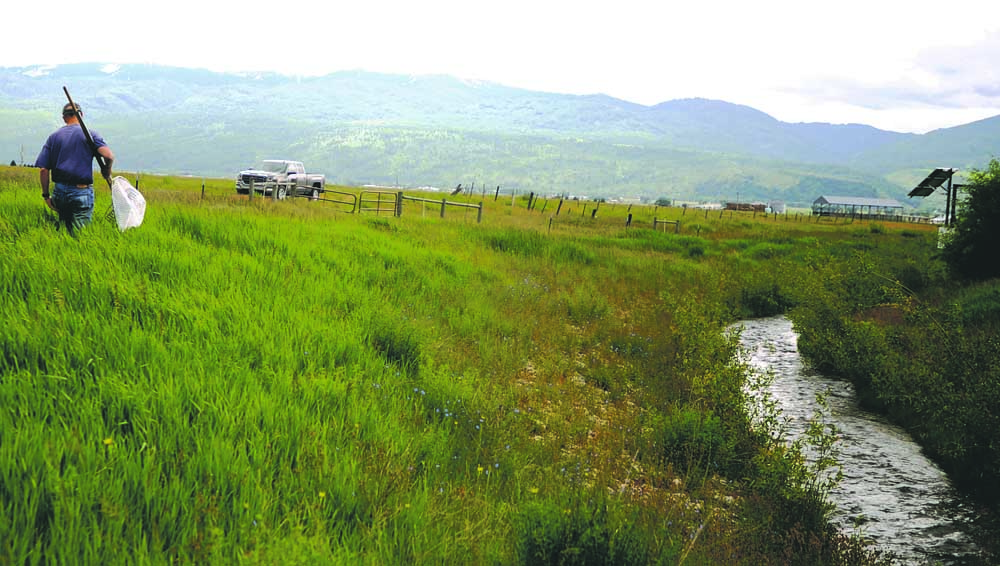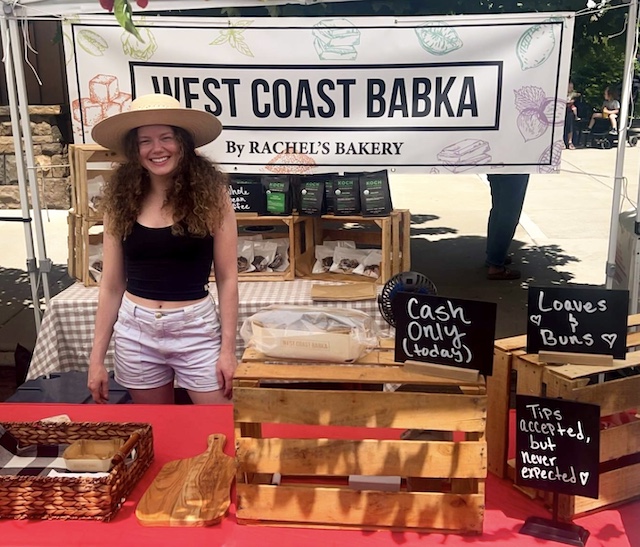Preventing fish from becoming fertilizer is costly Idaho project
Published 4:05 pm Monday, August 7, 2017

- Paul Patterson walks back to his truck after cleaning fish screens on Rainey Creek in Swan Valley on Friday afternoon. The Trout unlimited group has been working on the screens since the '90s. (Taylor Carpenter / tcarpenter@postregister.com)
Keeping fish from becoming fertilizer in irrigators’ land is expensive.
The Snake River Cutthroats’ work on Rainey Creek in Swan Valley in Idaho is its signature project in preventing young fish from ending up in irrigators’ fields. Total estimated costs for the project range from $500,000 to $850,000 including materials and contractor fees. The project was paid for with grants, donations and member fees.
Work started in 2005 after the group noted that several diversions for irrigation and fish barriers on the creek in Swan Valley prevented Yellowstone cutthroat from reaching spawning areas. Before the group started its project the creek had little connection to the South Fork of the Snake River despite its potential for spawning and rearing habitat. By fall of 2010 the group had restored fish passage in all but two of the barriers on the creek.
The group, a chapter of Trout Unlimited, worked with the Bureau of Reclamation, U.S. Forest Service, Bureau of Land Management, Idaho Fish and Game and local landowners to gain grants to purchase rotating fish screens, weirs and drum screens. By 2016 the group had installed five belt and drum screens to prevent fish from being diverted into irrigation canals. Patterson said management of the creek is also geared toward preventing hybrid spawning with rainbow trout, one of the biggest threats to cutthroat populations.
The belt screens are solar powered and set on a timer to occasionally rotate, pulling debris from the creek. There is also a small hole in a reservoir behind the screen where trapped fish can escape.
Drum screens utilize the creek’s flow to power its movement, similar to a watermill with cups attached to a spinning wheel that keeps the drum filtering debris and keeping out unwanted fish such as rainbow trout.
Former Snake River Cutthroats president Paul Patterson said the group has been doing work in the area since the early 1990s, but Rainey Creek needed the most improvement.
“It was always thought that Rainey Creek had the potential for the biggest increase (for spawning habitat) compared to its baseline,” Patterson said.
Creating the habitat also is a benefit to landowners on the creek. With the screens and drums, irrigators can water their fields and not worry about causing fish loss or damaging spawning and rearing seasons. Patterson said several landowners have allowed Trout Unlimited volunteers to access their land to clean the screens.
Matt Woodard, Trout Unlimited project manager for the Blackfoot River Home Initiative, said the work has kept landowners happy since fish don’t die in their fields after finding their way into irrigation ditches.
“All this work would not have been possible without the cooperation of local landowners,” Woodard said.
Ed Biddulph, who has owned property at the top of a hill along Rainey Creek north of U.S. Highway 26 for about 25 years, said the volunteers’ good work shows.
“They’ve done lot of work on the bank by stabilizing it along Rainey Creek and it really looks a lot better, and a big part of that is thanks to Matt Woodard,” Biddulph said. “He’s been very helpful as far as keeping us appraised of what’s going on and getting permission from the landowners to do it.”
On a recent trip to pluck out debris, Patterson said landowners have no qualms with volunteers making weekly or bimonthly trips through their property to access the stream.
Patterson said many of the 350 members of the Snake River Cutthroats schedule time to make the drive out to Swan Valley to clear the screens. Patterson said the group offers to reimburse members for gas.
Despite the group’s effort to make the creek a rearing habitat, Fish and Game data shows its effectiveness has been sporadic. Between April and June of 2010, Fish and Game trapped 145 cutthroat trout in Rainey Creek, a marked increase from the single fish recorded in 2002 and the 25 recorded in 2005. But numbers have dropped off significantly since 2010 with 73 caught in 2015 and 19 in 2016.
By comparison other tributaries of the South Fork, last year Fish and Game recorded 1,528 cutthroats in Burns Creek and 3,240 in Pine Creek.
Patterson said the group is in the process of reinvigorating Rainey Creek in partnership with Fish and Game, which started a research effort this year.
The next proposal looks at potentially stocking the creek with eyed eggs (eggs that have been fertilized and begun to develop) to speed up recovery. There have been failed proposals in listing Yellowstone cutthroat to the Endangered Species Act in the past, but Patterson said he’s hopeful that with a concerted effort from landowners and volunteers that won’t be needed.
“The South Fork is one of the last major strongholds of the cutthroat,” Patterson said. “Maintaining that is in everybody’s interest. Some of the irrigators may not always like it, but if they get listed, all of a sudden that river will be managed for benefit of the fish, not irrigators.”






